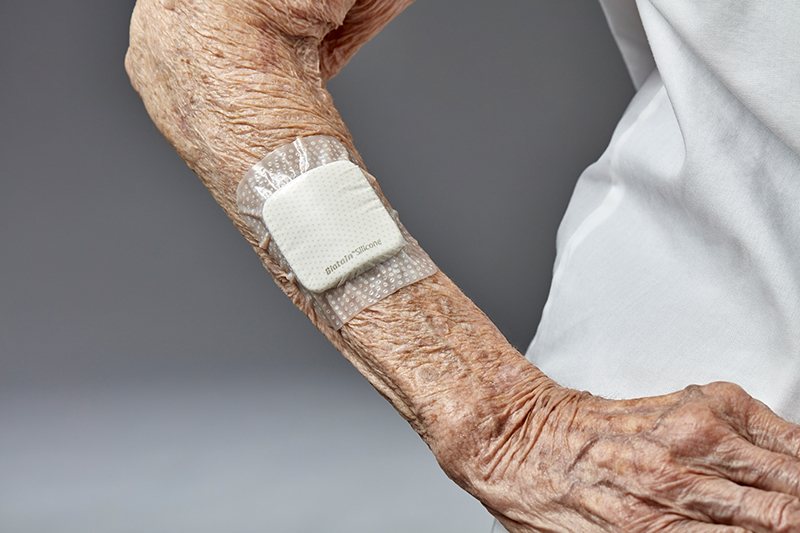The principles of effective venous leg ulcer management
In this section, you’ll learn about:
How to conduct a holistic leg ulcer assessment
Oneof the five main principles for managing leg ulcers is conducting a holistic patient assessment.
When you assess a patient holistically, you look at the wide range of factors that effects the patient – from their medical history and any underlying causes for the wound, to their lifestyle and general quality of life.1
For all your leg ulcer patients, you should follow these three steps:1,2
Let’s take a closer look at each step in greater detail:
Conducting a vascular assessment
Thepurpose of conducting a vascular assessment is to find out the ulcer’s aetiology – what’s causing it, and how severe the disease is. In most cases, performing a clinical examination and calculating the ankle brachial pressure index (ABPI) should give you the information you need to make a diagnosis.3
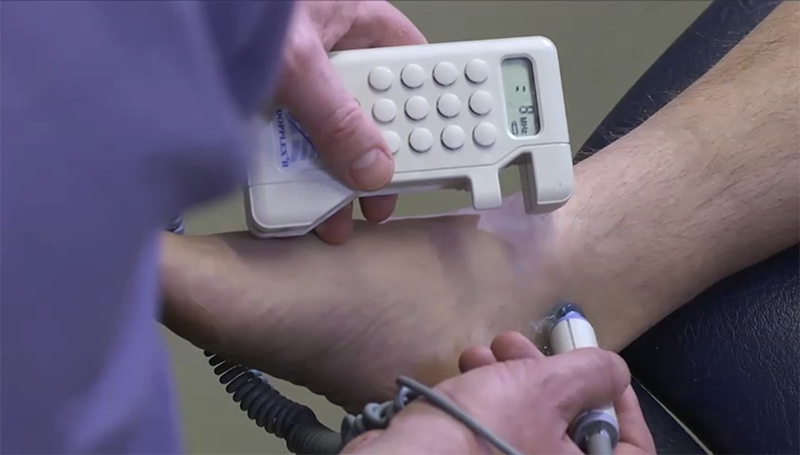
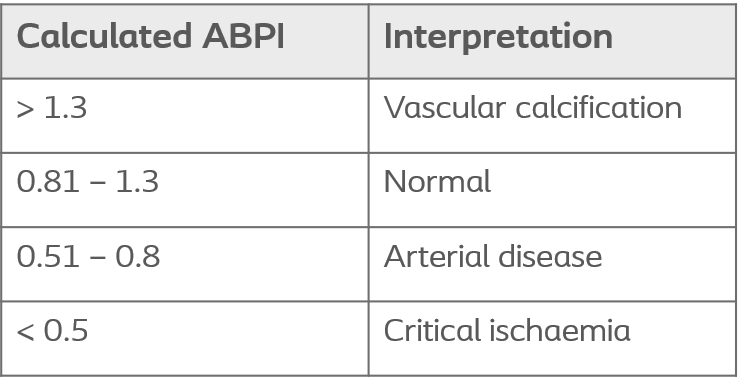
Assessment of the ancle brachial pressure index: The ABPI is conducted with a Doppler Ultrasound, and is necessary for the diagnosis of peripheral arterial deficiency. The ABPI is completed as a part of the assessment process, before compression therapy.
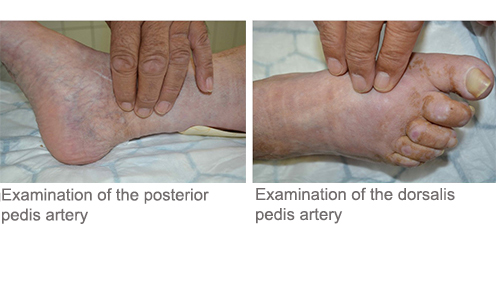
When you examine the leg, check for:3
- Pulse palpation
- Signs of venous hypertension
- Varicose veins, hemosiderin pigmentation, varicose eczema, atrophie blanche and lipodermatosclerosis
- Range of motion in the hip, knee and ankle
- Loss of protective sensation
Conducting a holistic wound assessment
The best way to conduct a holistic wound assessment is to take a structured approach. One tool that can help you do this is the Triangle of Wound Assessment. This wound assessment tool will help you to assess all areas of the wound, including:
- the wound bed;
- the wound edge;
- periwound skin; and
- the patient and their social context.
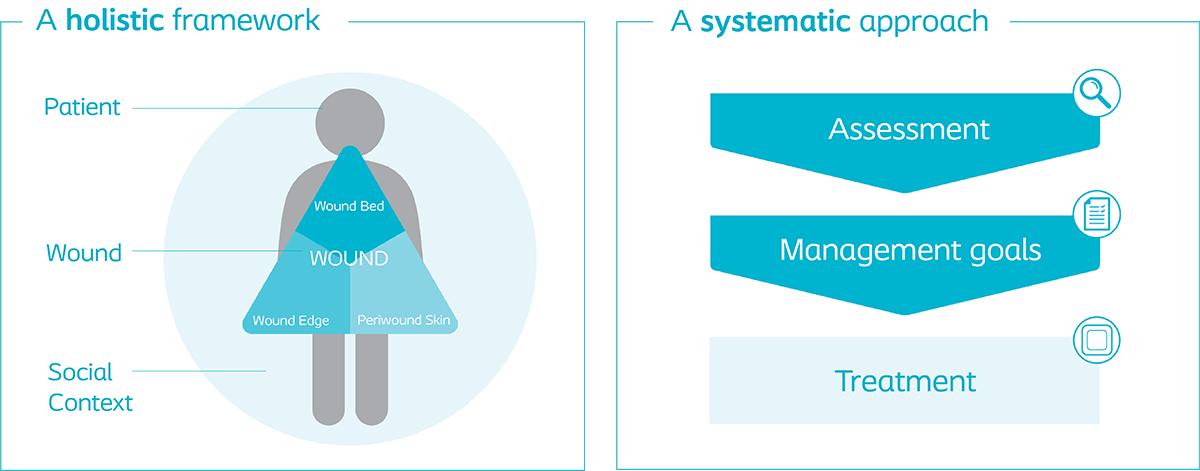
Assessing all of these factors will help you determine the optimal treatment choice, thus improving patient outcomes.
You can read more about the Triangle of Wound Assessment here.

Assessing the periwound skin
Patientswith leg ulcers often have skin problems that affect the periwound skin and the skin on the lower leg, e.g. maceration, excoriation and hyperkeratosis.
That’s why it’s important to keep the skin around the wound healthy by managing the environment around the wound. Following a structured skin care regimen and wound management protocols will help you do this.4
To maintain a healthy skin environment, follow these four key steps:
- Cleanse and prepare the skin
- Debride the wound
- Manage the periwound and surrounding skin
- Choose the right wound dressing
Fact box: When should I refer to a specialist?
You should consider a referral if:
- the wound hasn’t reduced in size after four weeks of treatment; or
- the wound hasn’t healed after 12 weeks of treatment.4
Please note:
It’s recommended that you assess all patients with clinical signs or symptoms of arterial or venous disease. This assessment will help you identify areas of arterial or venous insufficiency that may require a referral.1,2
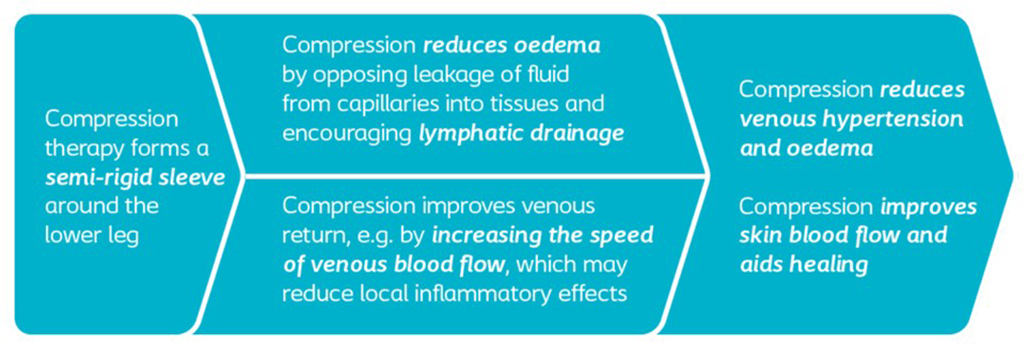
How compression therapy works
Toheal a venous leg ulcer, you need to control oedema – the collection of fluid in the wound. One of the main ways of doing this is through compression therapy.
You can use compression therapy alone, or together with operative therapy.5 By using compression to treat a lower limb wound – particularly if you see signs of venous disease – you will be able to prevent an ulcer from developing.
In the next section, we’ll discuss which wound dressings work best with compression therapy.
How do I choose the right wound dressing?
An effective wound dressing should:
- protect the wound;
- manage exudate effectively; and
- be suitable for use under compression therapy4
Look for a simple, non-adherent dressing – that is, one that doesn’t stick to the wound. The following chart can help you choose a dressing that matches the wound’s level of exudate.4

For a dressing to be used together with compression therapy, it needs to be able to retain moisture without leaking when placed under pressure.4
How will I know if the dressing is working?
When you first start compression therapy, you’ll often see very high exudate levels. If the therapy is working, the exudate levels will fall. This is because the blood flow will improve and the amount of fluid and inflammation will decrease. As these changes happen, you will need to change the dressing accordingly.4
Each time you assess the wound dressing, consider:
- How is the dressing performing?
- How are the exudate levels? Do you need to change the dressing more or less frequently to absorb the current level of exudate?
Please note:
When deciding how often to change the wound dressing, you should aim to match the dressing change to the frequency of the compression therapy change.4
Your checklist for what an effective wound dressing should do:4
- maintain a moist wound environment while handling different exudate levels;
- absorb and retain fluid when used under compression (that is, prevent strike-through);
- conform to the wound bed;
- be comfortable for the patient;
- be hypoallergenic;
- be non-adherent (that is, doesn’t stick to the wound bed); and
- atraumatic (that is, doesn’t damage the wound bed or periwound skin when removed).
References
- Wounds UK (2019) Best Practice Statement: Addressing Complexities in the Management of Venous Leg Ulcers. London: Wounds UK. Available to download from: www.wounds-uk.com
- Waterloo Wellington Integrated Wound Care Program (2016). Evidence-Based Care for Arterial Leg Ulcers. Final May 5.
- Agale, S. V. (2013). Chronic Leg Ulcers: Epidemiology, Aetiopathogenesis, and Management. Hindawi Publishing Corporation. 1-10
- Harding K, et al. Simplifying venous leg ulcer management. Consensus recommendations. Wounds International 2015
- Poblete, H., Elias, S. (2009) Venous Ulcers: New Options in Treatment: Minimally Invasive Vein Surgery. Journal of the American College of Certified Wound Specialists 1, 12–19.
You may also be interested in…
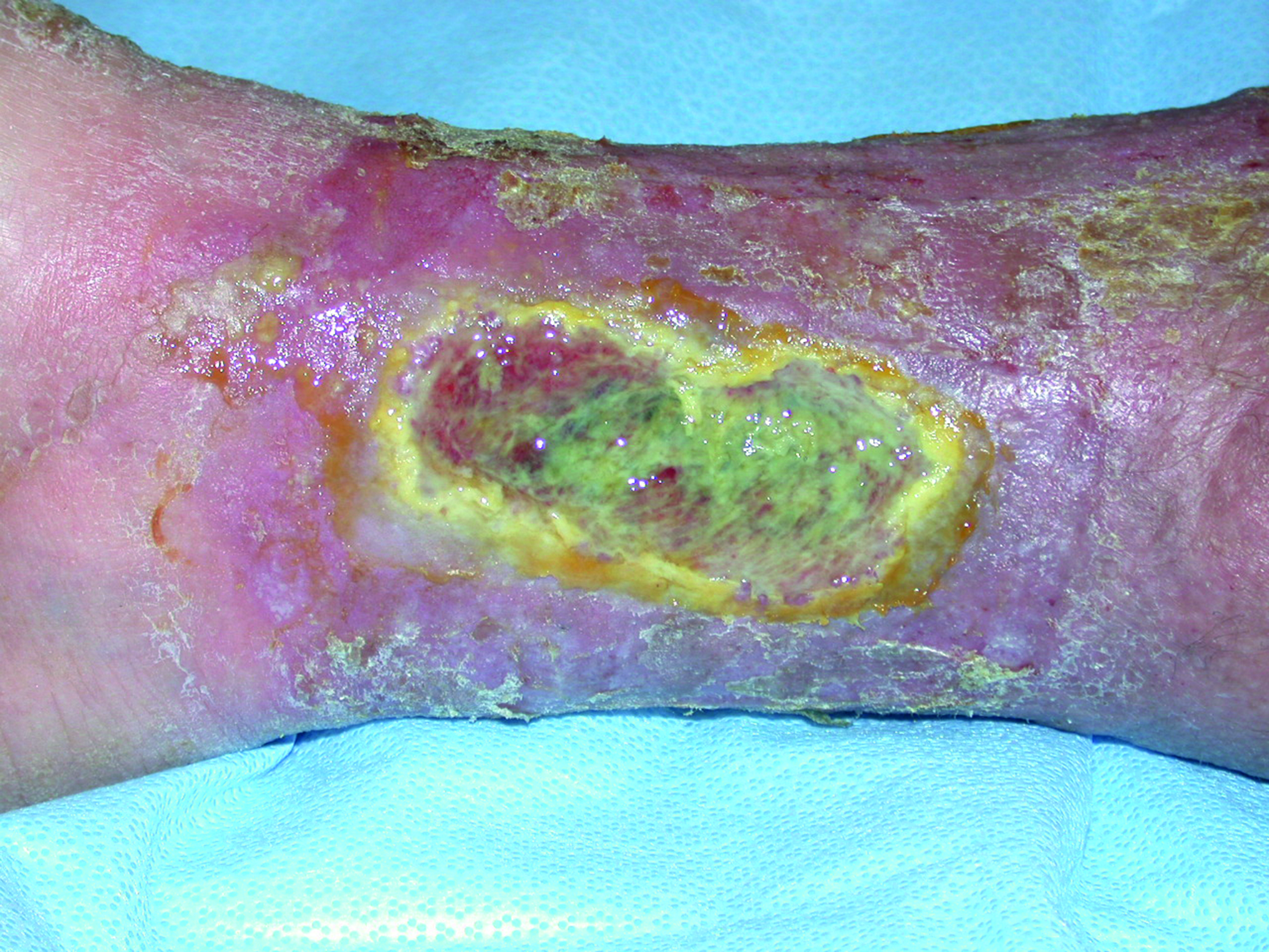
HEAL e-learning
Learn about leg ulcers and how to manage them with this EWMA-endorsed course.
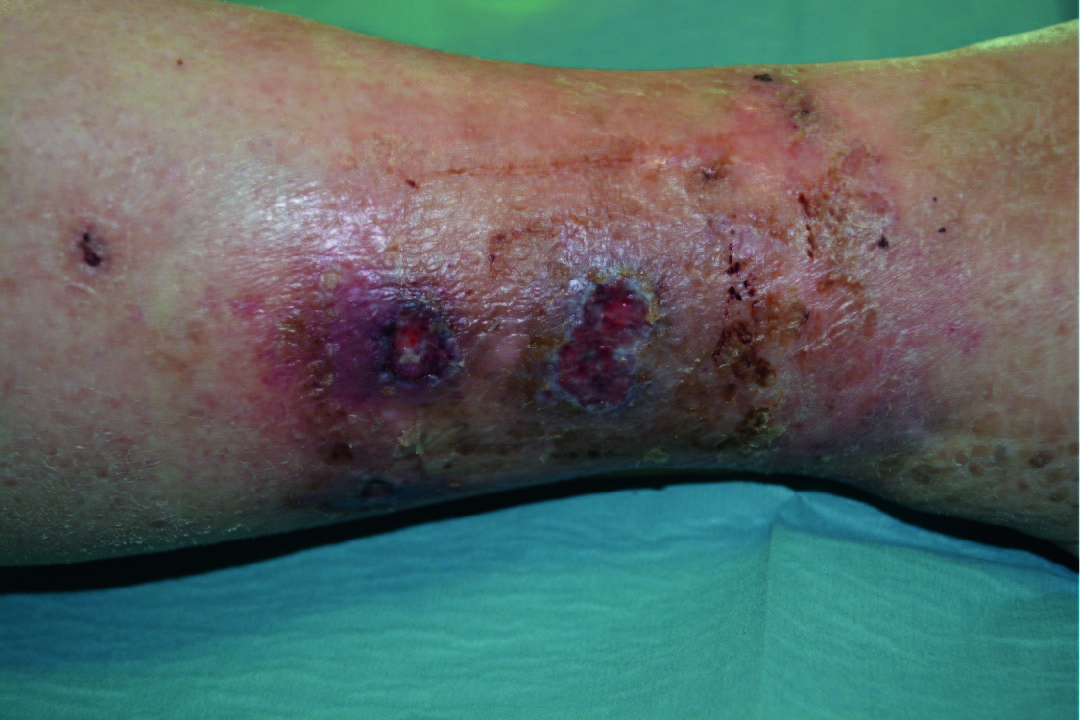
Patient case
Learn how a colonized arterial wound was managed with a silicone foam dressing.
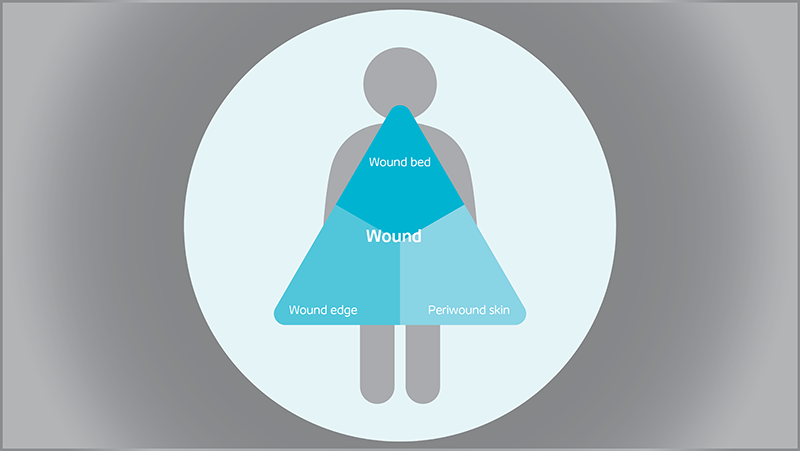
Triangle of Wound Assessment
Conduct a holistic and systematic wound assessment with our tool.

